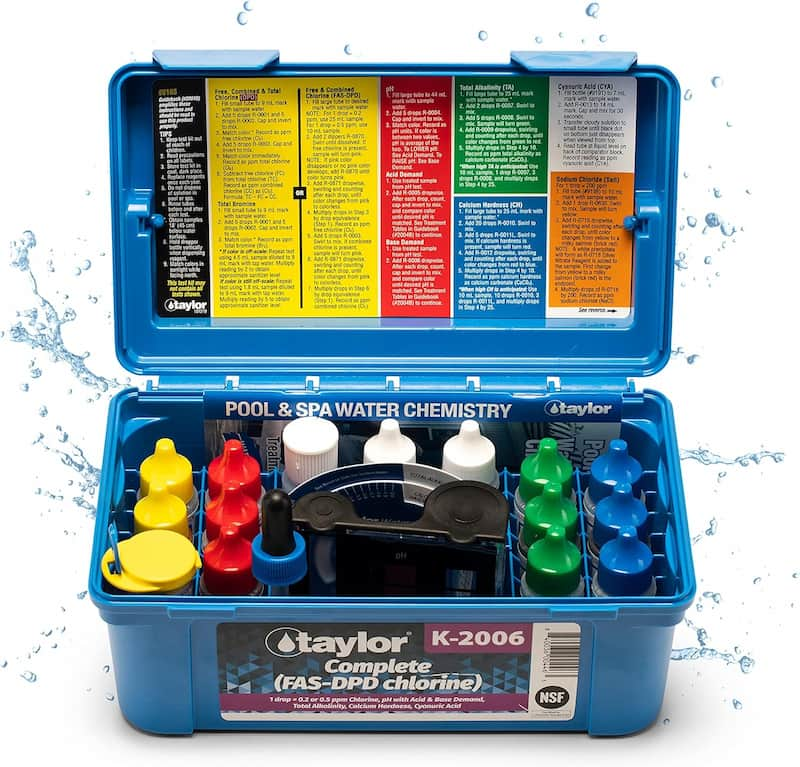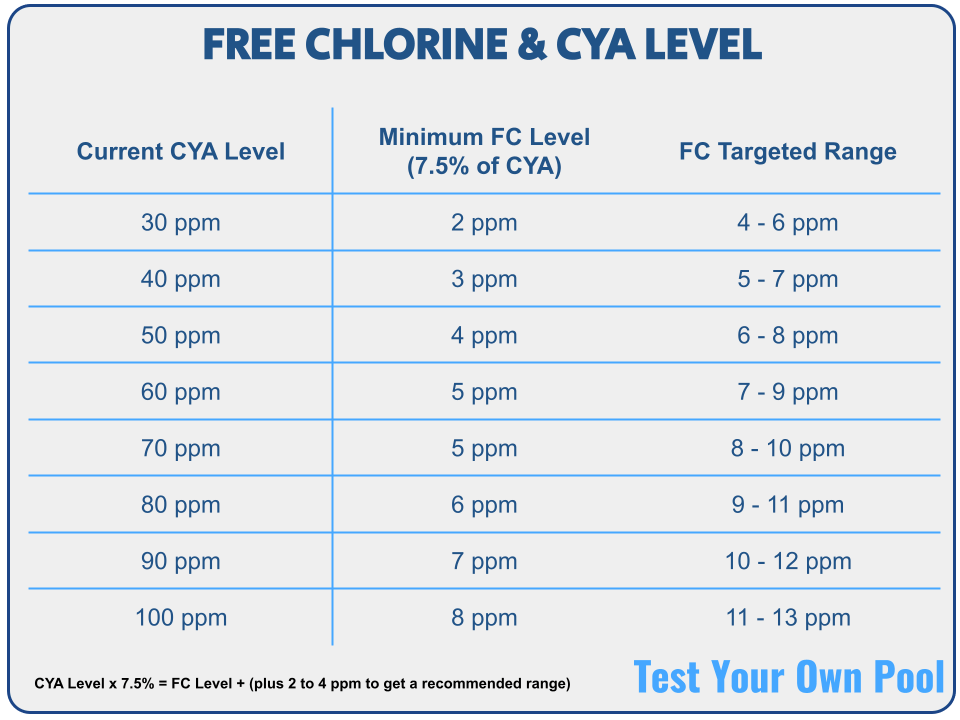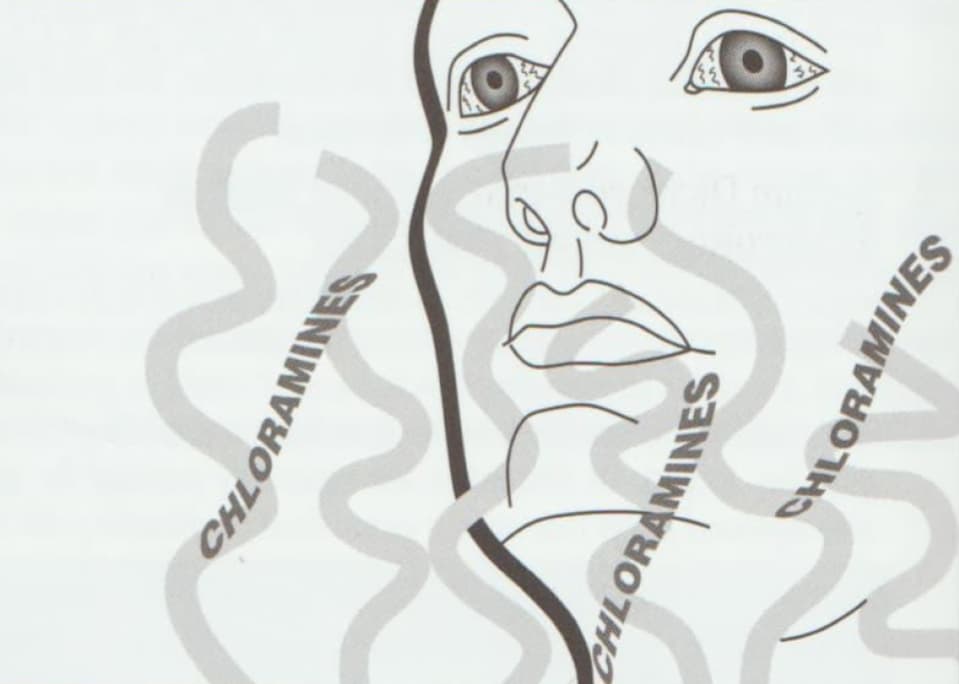Everyone knows that “pool smell”. It’s pungent, stings the eyes, and smells like rotten eggs. It often gets confused with too much chlorine in the pool. However, what you smell is actually chloramines.
Chloramines are also known as combined chlorine (CC) and they are not something you want in the water. The presence of combined chlorine indicates a problem that should be fixed right away.
What is Combined Chlorine?
Combined chlorine (CC), or chloramines, is the reaction of free chlorine (FC) binding with organic contaminants and ammonia in the water during sanitation.
In pools, any type of chlorine is used to prevent and kill harmful bacteria and other microorganisms. When free chlorine reacts with swimmers’ sweat, urine, or other bodily fluids, it forms chloramines. High levels of chloramines will start to get that pool smell.
Ideally, there should be no chloramines in the water at any time. Anything above 0.5 ppm indicates a water issue that needs addressing.
Further Understanding the Relationship Between Combined Chlorine and Free Chlorine
The presence of chloramines indicates that the chlorine is actively working to clean the pool water, but it also indicates that the water has contaminants.
If free chlorine measures the amount of chlorine available, then combined chlorine tells us how much is being used to fight the bad stuff.
How Chloramines Impact Pool Water
The smell is just one part of how chloramines can have an effect on a pool. They can result in skin and eye irritation in swimmers, often mistaken as over-chlorination.
In high concentrations, they can even cause respiratory problems, particularly for people with respiratory sensitivity or asthma.
Additionally, the mere presence of chloramines indicates a water balance problem, whether it is the start of an algae bloom or the water getting cloudy.
How to Test for Chloramines in a Pool
Testing for combined chlorine requires an accurate pool testing kit.
When testing for chlorine, kits usually have a variety of combined chlorine, free chlorine, and total chlorine. Total chlorine is simply the combination of free chlorine and combined chlorine levels (TC = FC + CC).
Testing kits like the Taylor K-2006 allow FAS-DPD testing, which tests FC and CC directly, rather than TC.

Taylor K-2006 Pool Test Kit
*As an Amazon Associate, I earn from qualifying purchases at no additional cost to you.
Combined chlorine levels should be tested daily along with free chlorine.
How to Get Rid of Combined Chlorine in the Pool
Preventing the buildup of chloramines should be the main goal. Ensuring you always have enough free chlorine in the pool to fight any contaminants is crucial. Free chlorine levels are dependent upon your cyanuric acid (CYA) level.

Eliminating combined chlorine from the pool is done by simply adding more chlorine or shocking the pool. It involves adding a large dose of chlorine to the pool to break down the chloramines.
The amount of chlorine required largely depends on your cyanuric acid (CYA) level. Refer to the steps of shocking to know when the process is complete and CCs have been eliminated.
Keeping the Pool in Check
Regular pool maintenance and balancing of both free and combined chlorine levels are key to ensuring a safe and enjoyable swimming environment.
By understanding the role and impact of combined chlorine, pool owners can better manage their pool’s health and longevity. Oh, and also avoid that awful smell!

